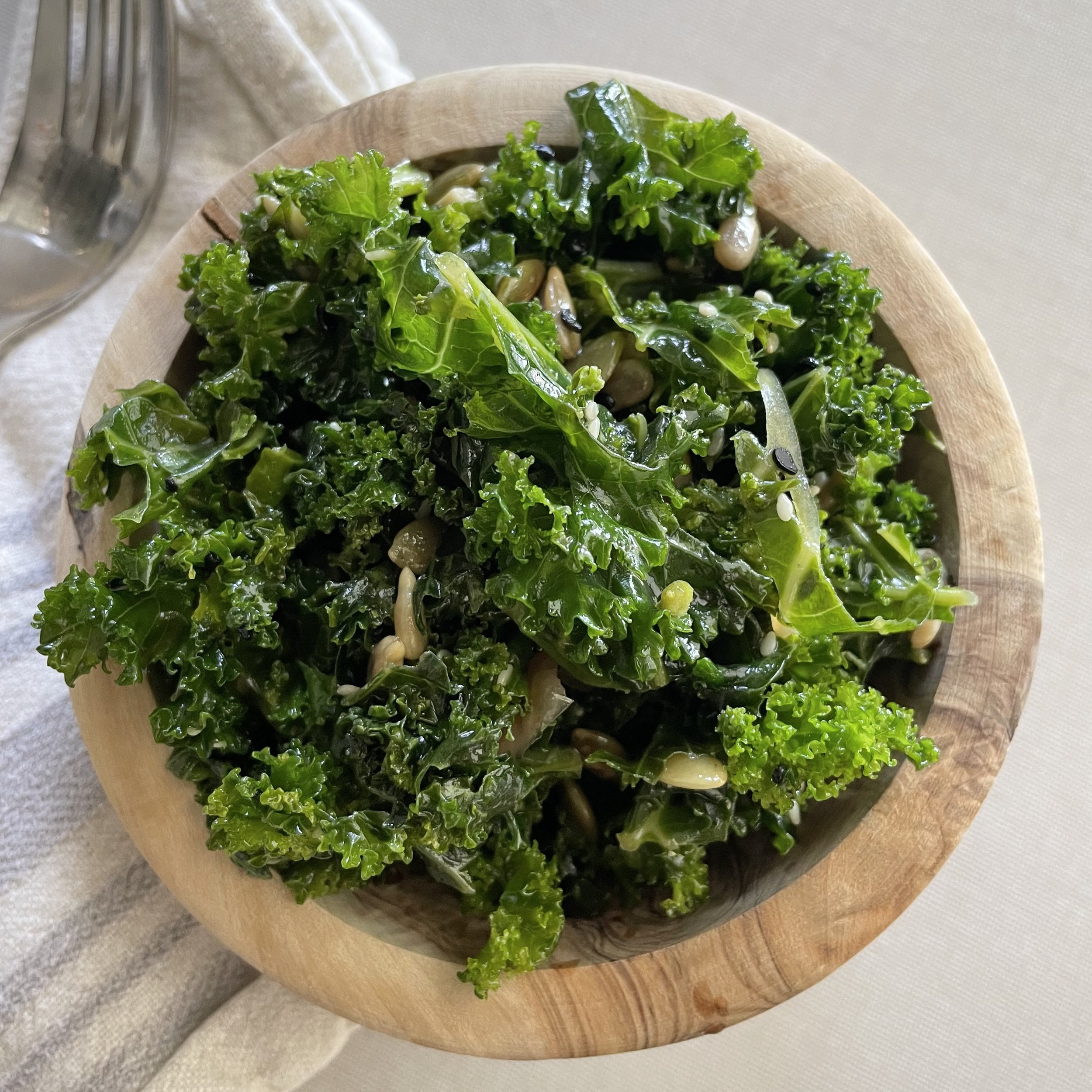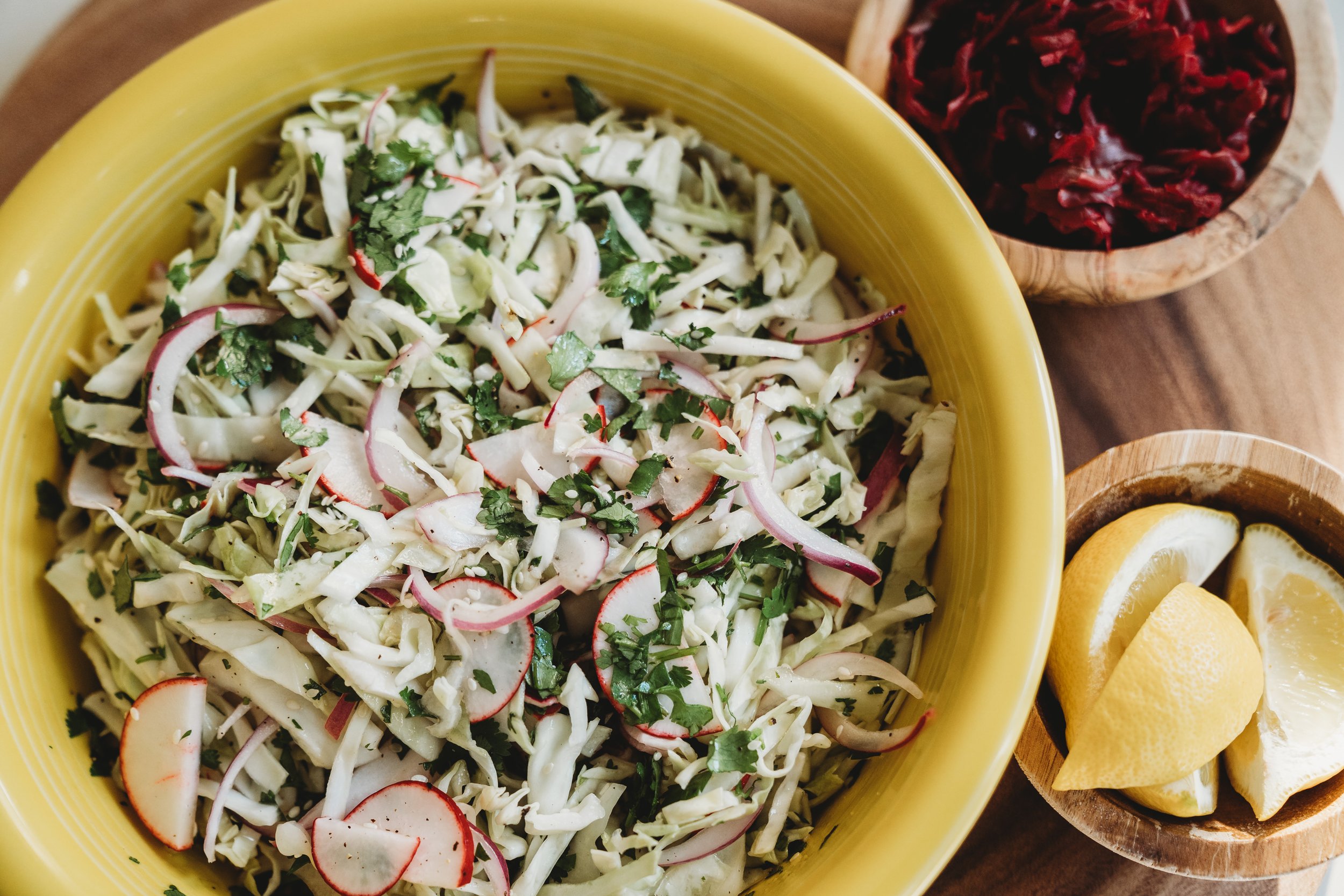Directions:
1. When fermenting, it's best to give the good bacteria every chance of succeeding by starting off with a clean environment. Make sure your mason jar is are washed, rinsed and dried well. You'll be using your hands to massage the salt into the cabbage, so ensure your hands are clean too.
2. Pull off and set aside two larger outer leaves from the cabbage. Finely shred the remainder - chopping yourself using a sharp knife or feel free to shred in a food processor.
3. In a large mixing bowl combine the cabbage with the sea salt by hand. You'll want to spend quite a bit of time on this step (usually about 15 min!), until the cabbage starts to get all juicy and you have liquid pooling at the bottom of the bowl. It might get sort of foamy too. Add any additional ingredients at this time and incorporate well.
4. Pack the veggies into your mason jar. You'll want to stuff the jar with an inch or two of cabbage and pack it tightly down, then add another inch or two and repeat. Liquid should come up and cover the veggies at each stage of the packing and layering. Pack the veggies until you reach the top quarter of the jar. You will want to leave about an inch or two of space and you’ll want to make sure your veggies are below the liquid/brine. If needed, add a splash of filtered water until the veggies are completely covered.
5. Layer the top of the veggies with the reserved folded outer cabbage leaves and place a weight (like a shot glass) in the jar to keep the liquid over the cabbage.
6. Cover jar with a towel and place somewhere that doesn’t get direct sunlight. I generally store the jar on a plate (because sometimes the brine will overflow) in an unobtrusive corner of the kitchen where I won’t forget about it, but where it won’t be in anybody’s way. You could also store it in a cool basement if you want slower fermentation that will preserve the sauerkraut for longer.
7. Check the kraut every two to three days. The volume reduces as the fermentation proceeds. You may want/need to periodically pack your veggies down with a spoon or the shot glass. If you need to add extra liquid, dissolve 1 teaspoon of salt in 1 cup of water and add enough to submerge the cabbage again. Add the extra liquid as often as needed.
8. Sometimes mold appears on the surface (this rarely happens in my experience). Skim what you can off of the surface; however, it will break up and you will probably not be able to remove all of it. Don’t worry about this. It’s just a surface phenomenon, a result of contact with the air. The kraut itself is under the anaerobic protection of the brine.
9. After about 3 weeks, you can taste your kraut (you are always welcome to taste it earlier, it wont hurt!). It should taste sour and slightly salty with a tangy flavor and have a nice but strong aroma. If it tastes good, it's good. If it tastes bad, you may need to scrape off the top layer and discard it, then see if the kraut tastes yummy beneath the liquid. Once the taste is to your liking, seal and store it in the fridge for months. Enjoy!
Note: if you enjoyed this process and think you will do more fermenting, here is a round up of my favorite recipes. You may also want to invest in some supplies, I have linked my favorite lids and weights here as well.










